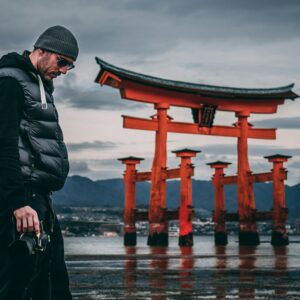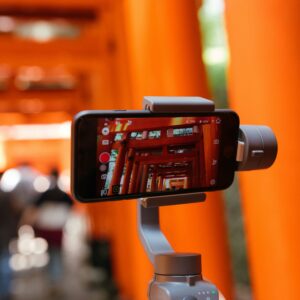14-Day Japan Itinerary: In-Depth Exploration
Table of Contents
- Day 1: Arrival and Shibuya
- Day 2: Asakusa and Ueno
- Day 3: Modern Tokyo – Harajuku and Shinjuku
- Day 4: Arrival in Kyoto and Gion District
- Day 5: Fushimi Inari and Kiyomizu-dera
- Day 6: Arashiyama and Bamboo Forest
- Day 7: Hiroshima Peace Memorial Park
- Day 8: Miyajima Island and Itsukushima Shrine
- Day 9: Hiroshima Castle and Shukkeien Garden
- Day 10: Osaka Castle and Dotonbori
- Day 11: Universal Studios Japan
- Day 12: Namba and Shinsaibashi Shopping Districts
- Day 13: Nara – Temples, Deer, and Ancient Treasures
- Day 14: Mount Koya (Koyasan) – A Sacred Buddhist Retreat
- Final Thoughts on Your 14-Day Japan Itinerary
- Looking for a tour agency to help with your planning?
Planning to spend two weeks in Japan? A 14-day itinerary allows you to dive deep into Japan’s rich culture, natural beauty, and diverse cities. This in-depth itinerary gives you plenty of time to explore the must-see spots, but also to wander off the beaten path. It’s perfect for those who want to experience Japan in a more relaxed way, while still covering the highlights.
For more inspiration on planning your trip, check out our Japan Travel Itineraries: Comprehensive Guides for Every Traveler.
Day 1: Arrival and Shibuya
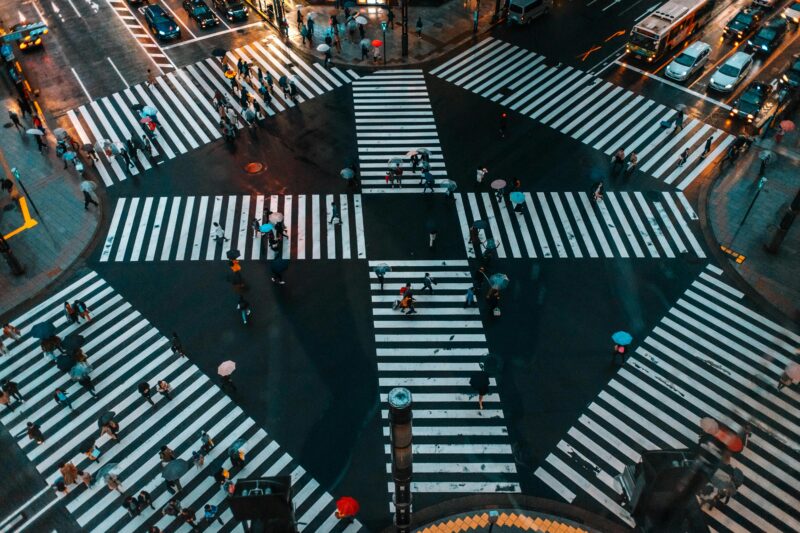
Once you land in Tokyo, take it easy and settle into your accommodation. If you’re staying in central districts like Shibuya or Shinjuku, you’re in one of the busiest parts of the city. After unpacking, take a stroll around Shibuya Crossing, one of the most iconic spots in Tokyo. The intersection is known for its chaotic energy, where hundreds of people cross at once. A short walk away, you’ll find the Hachiko Statue, a famous meeting spot dedicated to the loyal dog Hachiko who waited for his owner every day, even years after his passing—a story that resonates deeply with Japanese culture.
Tip from Firefly Japan: For your first meal, try one of the nearby izakayas (Japanese-style pubs) like Izakaya Gonpachi or the more casual Uobei Sushi in Shibuya. Sushi here is served on conveyor belts, and you order directly from a touch screen—a fun experience for first-time visitors.
For more details on Tokyo, check out our Complete Tokyo Travel Guide.
Day 2: Asakusa and Ueno
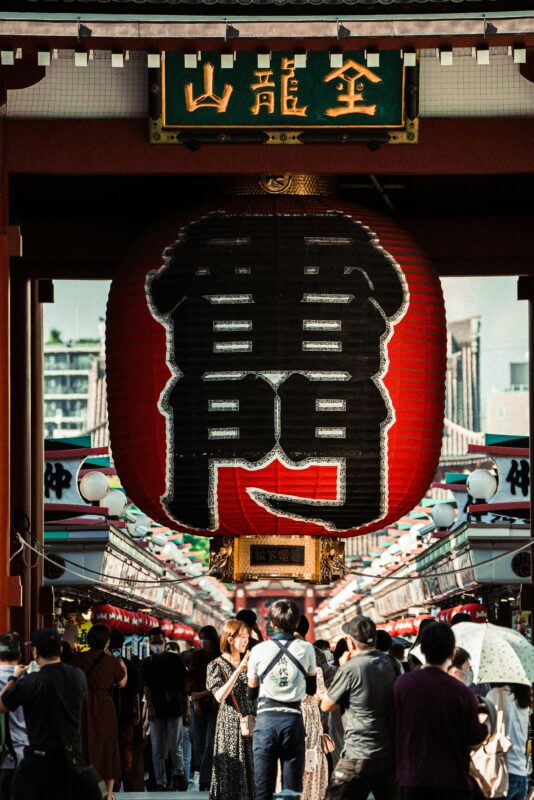
Your second day will take you to the more traditional side of Tokyo, starting in Asakusa. Head straight to Sensoji Temple, the oldest temple in Tokyo. The atmosphere around the temple grounds is lively, especially on Nakamise Street, where you can pick up traditional snacks and souvenirs. This temple dates back to the 7th century and was built in honor of Kannon, the goddess of mercy. The Kaminarimon (Thunder Gate) at the entrance is one of the most photographed landmarks in the city.
From there, move to Ueno Park, a vast green space home to several museums and the famous Ueno Zoo. It’s a great spot to relax or visit one of the many art galleries, like the Tokyo National Museum. If you’re traveling in the spring, this park is a popular spot for cherry blossom viewing (hanami).
Tip from Firefly Japan: Grab lunch at one of the small, family-run eateries in Asakusa like Imahan, which serves delicious sukiyaki (a Japanese hot pot dish). It’s a comforting meal, perfect after exploring the temple.
Check out our Day Trips from Tokyo Guide for more ideas on exploring the area.
Day 3: Modern Tokyo – Harajuku and Shinjuku
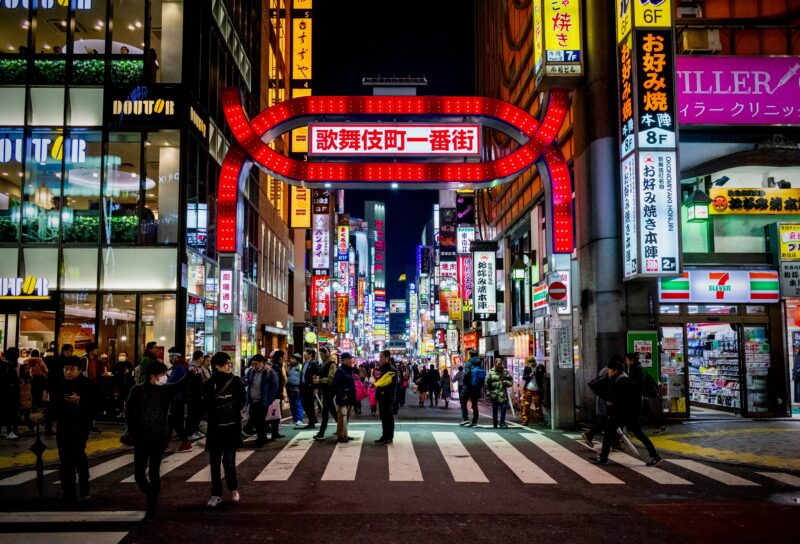
Today, explore the vibrant youth culture of Harajuku. Start your morning with a walk through Meiji Shrine, located in a peaceful forested area. This Shinto shrine was dedicated to Emperor Meiji and his wife, Empress Shoken, and it’s a serene break from the hustle and bustle of the city.
After visiting the shrine, head to Takeshita Street, the heart of Tokyo’s teenage culture, known for its colorful fashion, quirky shops, and sweet treats like crepes and Totti Candy Factory’s giant cotton candy. For lunch, try Kawaii Monster Café—it’s a fun experience, especially if you’re traveling with kids or just want something completely out of the ordinary.
In the evening, make your way to Shinjuku. Climb up to the observation deck of the Tokyo Metropolitan Government Building for a free panoramic view of the city. The nighttime skyline, with the twinkling lights of Tokyo’s skyscrapers, is stunning.
Tip from Firefly Japan: If you’re in Shinjuku in the evening, Golden Gai is a must-visit. This area consists of narrow alleys filled with tiny bars that each have their own personality. It’s one of the best places to experience Tokyo’s nightlife in an intimate setting.
For an in-depth look at Kyoto, check out our guide to Cultural Experiences in Japan.
Day 4: Arrival in Kyoto and Gion District
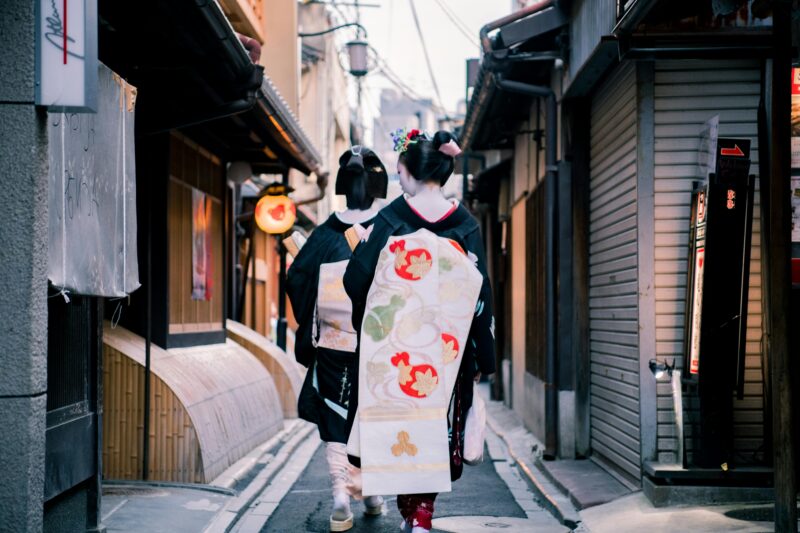
On Day 4, travel from Tokyo to Kyoto via the Shinkansen (bullet train), which takes about 2.5 hours. Kyoto is often considered the cultural heart of Japan, with its historical temples, serene gardens, and traditional tea houses. After checking into your accommodation, start your exploration with a leisurely walk through the Gion District, Kyoto’s famous geisha neighborhood. The narrow streets are lined with traditional wooden machiya houses, many of which are now restaurants and tea houses.
Be sure to visit Yasaka Shrine, located at the end of Shijo Avenue in Gion. This shrine is dedicated to the Shinto gods of prosperity and protection. As evening falls, you may even catch a glimpse of geiko (Kyoto geisha) or maiko (apprentice geisha) heading to their evening appointments.
Tip from Firefly Japan: For dinner, try a traditional kaiseki meal (a multi-course Japanese dinner) at one of the local restaurants in Gion. Gion Karyo offers beautifully presented seasonal dishes, giving you a taste of Kyoto’s sophisticated cuisine.
For more food-centric travel tips, don’t miss our Japan Foodie Itinerary.
Day 5: Fushimi Inari and Kiyomizu-dera

Start your day early by visiting Fushimi Inari Shrine, one of Japan’s most iconic sites. Famous for its thousands of red torii gates, the shrine is dedicated to Inari, the Shinto god of rice and prosperity. Walking through the winding paths of torii gates is a surreal experience, and the hike up Mount Inari provides peaceful forest scenery with views over Kyoto.
In the afternoon, head to Kiyomizu-dera, one of Kyoto’s most celebrated temples. The temple’s large wooden stage offers a breathtaking view of the city, especially during autumn when the leaves turn vibrant shades of red and orange. Kiyomizu-dera, originally built in 778, is also famous for its natural spring waters, believed to have wish-granting properties.
Tip from Firefly Japan: Visit the streets around Kiyomizu-dera, especially Sannenzaka and Ninenzaka, where you’ll find traditional tea houses and souvenir shops. Try local sweets like yatsuhashi (cinnamon-flavored rice crackers) and enjoy a cup of matcha while overlooking the beautiful scenery.
Day 6: Arashiyama and Bamboo Forest

Spend Day 6 exploring the picturesque Arashiyama district, located on the western outskirts of Kyoto. Begin your visit with a stroll through the Arashiyama Bamboo Grove, where towering bamboo stalks create a serene, otherworldly atmosphere. It’s one of the most photographed spots in Kyoto and an absolute must-see.
Next, head to Tenryu-ji Temple, a UNESCO World Heritage site and one of the most important Zen temples in Kyoto. The temple’s gardens are particularly beautiful, blending perfectly with the surrounding mountains. Afterward, take a leisurely walk along the Togetsukyo Bridge, which spans the Hozu River. This area is especially popular in autumn when the foliage creates a colorful backdrop.
Tip from Firefly Japan: For a unique cultural experience, take a traditional boat ride along the Hozu River. It’s a peaceful way to enjoy the natural beauty of the Arashiyama area. You can also visit Iwatayama Monkey Park, where you can interact with wild monkeys while enjoying panoramic views of Kyoto.
Day 7: Hiroshima Peace Memorial Park
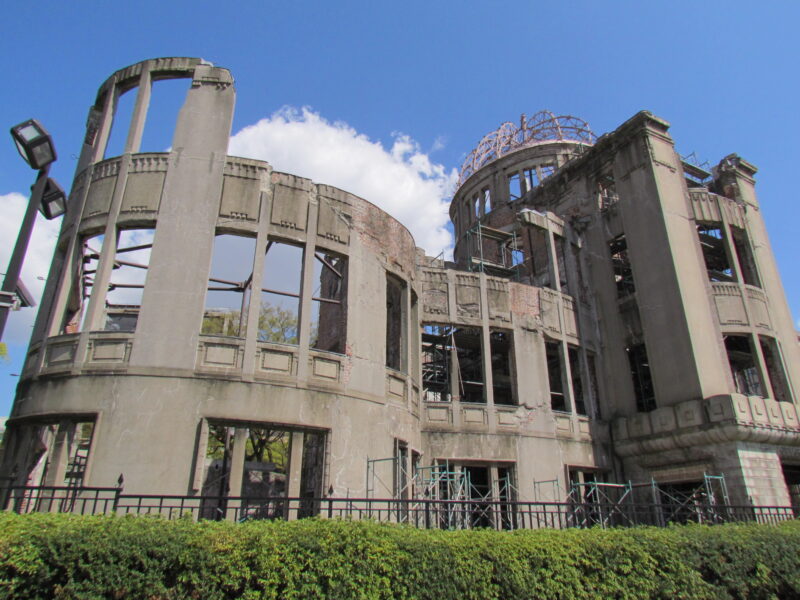
Take the Shinkansen from Kyoto to Hiroshima, which takes about two hours. Upon arrival, head straight to Hiroshima Peace Memorial Park, a somber yet vital place to visit. The park is dedicated to the victims of the atomic bombing during World War II, with the A-Bomb Dome standing as a haunting reminder of the city’s tragic past. Take time to visit the Peace Memorial Museum, where you can learn more about the events of August 6, 1945, and the ongoing global peace efforts inspired by Hiroshima’s history.
After exploring the park, take a quiet moment at the Children’s Peace Monument, adorned with thousands of colorful paper cranes representing the wish for peace.
Tip from Firefly Japan: Don’t leave without trying okonomiyaki, Hiroshima’s famous savory pancake filled with noodles, vegetables, and meat. Popular spots like Okonomimura offer a variety of styles and toppings for this local delicacy.
Day 8: Miyajima Island and Itsukushima Shrine
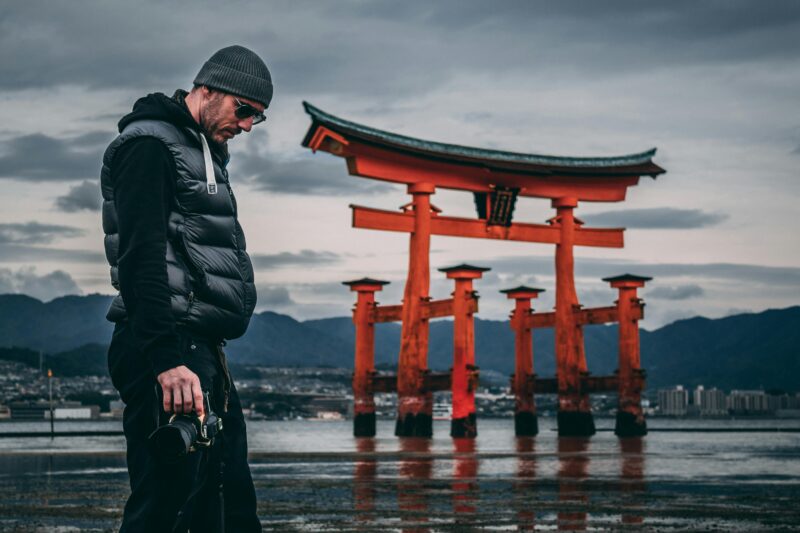
On Day 8, take a short ferry ride from Hiroshima to Miyajima Island, famous for its floating torii gate and Itsukushima Shrine. As you approach the island, the large red gate appears to float on the water during high tide—a breathtaking sight that has made it one of Japan’s most iconic views.
Spend your day exploring Itsukushima Shrine, which dates back to the 12th century and is built on stilts over the water. The island itself is also home to friendly deer that roam freely and are happy to interact with visitors. If you’re up for a challenge, hike up Mount Misen for stunning panoramic views of the Seto Inland Sea.
Tip from Firefly Japan: Visit during sunset for an unforgettable view of the torii gate and shrine. The reflection of the gate on the water, coupled with the soft evening light, creates a magical atmosphere.
Day 9: Hiroshima Castle and Shukkeien Garden
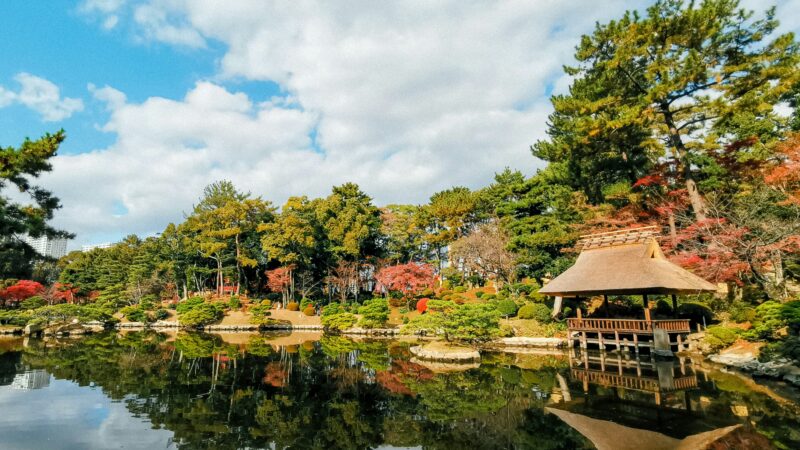
Before leaving Hiroshima, visit Hiroshima Castle, also known as Carp Castle, which was reconstructed after World War II. The castle offers a fascinating look into samurai life and the history of Hiroshima before the bombing.
In the afternoon, relax at Shukkeien Garden, a beautifully landscaped garden originally built in the 17th century. Its name translates to “shrunken-scenery garden,” as it was designed to mimic natural landscapes in a compact space. Stroll along the winding paths around the pond, crossing small bridges, and taking in the carefully curated scenery.
Tip from Firefly Japan: Take a moment to enjoy a traditional tea ceremony in one of the tea houses located within the garden. It’s a calming and cultural way to wrap up your time in Hiroshima.
Day 10: Osaka Castle and Dotonbori
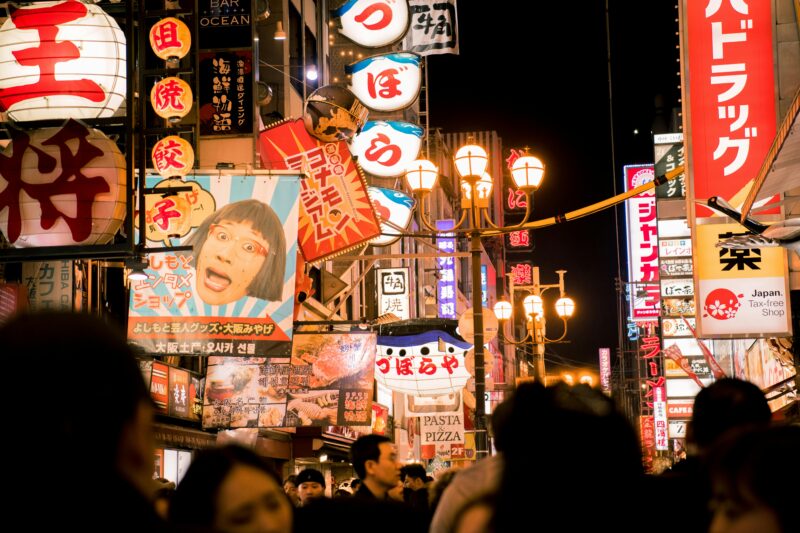
Take the Shinkansen from Hiroshima to Osaka, which takes about 90 minutes. Start your Osaka adventure by visiting Osaka Castle, a striking structure surrounded by lush gardens and a moat. Originally built in the late 16th century by warlord Toyotomi Hideyoshi, Osaka Castle played a significant role in Japan’s unification during the Sengoku (Warring States) period. The interior houses a museum detailing the history of the castle and its impact on the region.
After exploring the castle, head to Dotonbori, Osaka’s vibrant entertainment and food district. Known for its bright neon lights, giant billboards, and the famous Glico Man sign, Dotonbori is the perfect place to experience Osaka’s energetic nightlife and food culture.
Tip from Firefly Japan: Be sure to try some of Osaka’s famous street food, such as takoyaki (octopus balls) and okonomiyaki (savory pancake). These local delicacies are best enjoyed fresh from the street vendors lining Dotonbori.
Day 11: Universal Studios Japan
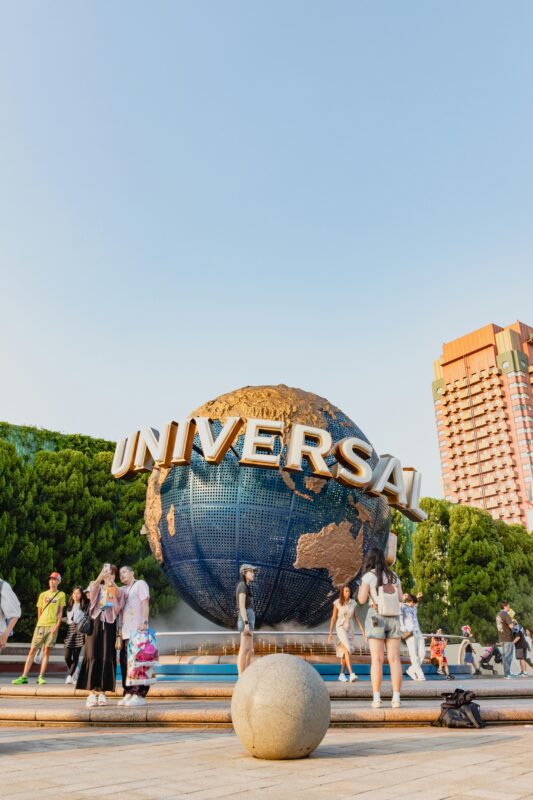
For a fun-filled day, take your family or friends to Universal Studios Japan, one of the top theme parks in the country. Located in Osaka’s waterfront area, this park offers a wide range of attractions, including The Wizarding World of Harry Potter, Jurassic Park, and the Super Nintendo World, a newer addition where you can immerse yourself in the world of Mario.
Plan your visit by checking show times and ride availability in advance. If you’re a fan of thrill rides, don’t miss The Flying Dinosaur or Hollywood Dream: The Ride. For younger visitors, there are family-friendly attractions and character parades throughout the day.
Tip from Firefly Japan: Buy an Express Pass to skip long lines for popular rides and make the most of your day. You can also catch character-themed food and snacks, like Butterbeer at the Harry Potter section.
Day 12: Namba and Shinsaibashi Shopping Districts

Spend your last full day in Osaka exploring the bustling Namba and Shinsaibashi areas, which are famous for shopping, dining, and entertainment. Start with Shinsaibashi Shopping Arcade, a covered shopping street that stretches for over 600 meters. You’ll find a mix of international brands, local shops, and boutique stores here.
Afterward, head to the trendy America-mura (America Village), known for its quirky street art, fashion boutiques, and vintage shops. This is the place to explore Osaka’s youth culture and pick up some unique souvenirs. The neighborhood also has a growing coffee scene, so make sure to take a break at one of the independent cafes.
In the evening, return to Namba for dinner at one of the city’s many izakayas or yakitori bars. Osaka is known as the nation’s kitchen, and you won’t want to miss the opportunity to indulge in more of its culinary delights.
Tip from Firefly Japan: Try kushikatsu, a type of deep-fried skewered food, at Daruma, one of Osaka’s most famous kushikatsu chains. Don’t forget to dip your skewers in the shared sauce—just once though, as double-dipping is frowned upon!
Day 13: Nara – Temples, Deer, and Ancient Treasures
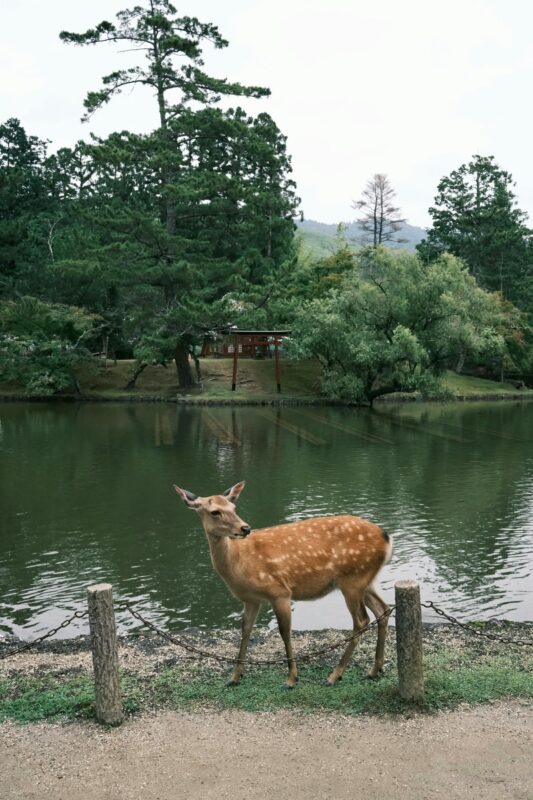
On Day 13, take a day trip from Osaka to Nara, just an hour away by train. Nara was Japan’s first permanent capital, and today it’s home to some of the country’s most impressive temples and ancient treasures. Your first stop should be Todaiji Temple, where you can see the massive bronze statue of the Buddha (Daibutsu), housed in one of the world’s largest wooden structures.
After visiting Todaiji, take a walk through Nara Park, where you’ll find hundreds of friendly deer roaming freely. The deer in Nara are considered sacred and are known to bow to visitors, especially if you offer them senbei (deer crackers) that you can purchase from vendors around the park.
Continue your exploration by visiting Kasuga Taisha Shrine, a Shinto shrine surrounded by thousands of stone lanterns. The shrine is a peaceful place to reflect on the rich history and traditions of the region.
Tip from Firefly Japan: If you’re visiting in the spring, Nara Park is one of the best places to enjoy cherry blossoms. The combination of blooming sakura and playful deer makes for unforgettable photos. Also, consider having lunch at one of the nearby restaurants offering local specialties like kakinoha-zushi (persimmon leaf sushi).
Day 14: Mount Koya (Koyasan) – A Sacred Buddhist Retreat
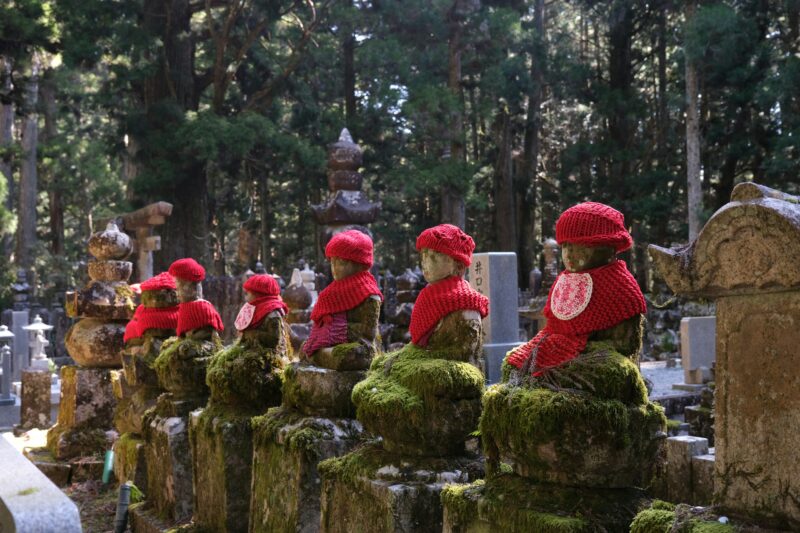
On your final day, take a day trip to Mount Koya, or Koyasan, one of the most important Buddhist sites in Japan. It’s about 2 hours from Osaka via train and cable car, but the journey is part of the experience as you ascend through the mountains.
Once at the top, visit Okunoin, the largest cemetery in Japan, and the resting place of Kobo Daishi, the founder of Shingon Buddhism. The atmosphere here is serene and spiritual, with towering cedar trees lining the paths between gravestones and monuments.
Next, explore Danjo Garan, a complex of temples that form the center of Koyasan’s spiritual life. One of the main attractions is the towering Konpon Daito pagoda, which stands at 45 meters tall and is a symbol of Koyasan.
For those seeking a deeper cultural experience, you can participate in a traditional Buddhist prayer ceremony or shojin ryori (Buddhist vegetarian cuisine) at one of the temples.
Tip from Firefly Japan: Consider staying overnight in a shukubo (temple lodging) to experience temple life fully. Guests can join morning prayers and meditation sessions with the monks, offering a rare opportunity to connect with Japan’s spiritual heritage.
Final Thoughts on Your 14-Day Japan Itinerary
This 14-day itinerary offers an in-depth look at Japan’s diverse landscapes, rich history, and vibrant cities. From the bustling streets of Tokyo to the tranquil temples of Kyoto and the serene beauty of Mount Koya, this journey will leave you with a deeper appreciation for the country’s unique culture. Whether you’re a history buff, nature lover, or food enthusiast, Japan has something for every traveler.
If you’re ready to plan your trip, check out our Comprehensive Japan Travel Itineraries for more insights and recommendations on how to make the most of your adventure. Safe travels, and enjoy exploring the wonders of Japan!
Looking for a tour agency to help with your planning?
Contact Firefly Japan to book a private luxury tour in Tokyo & Kanto
